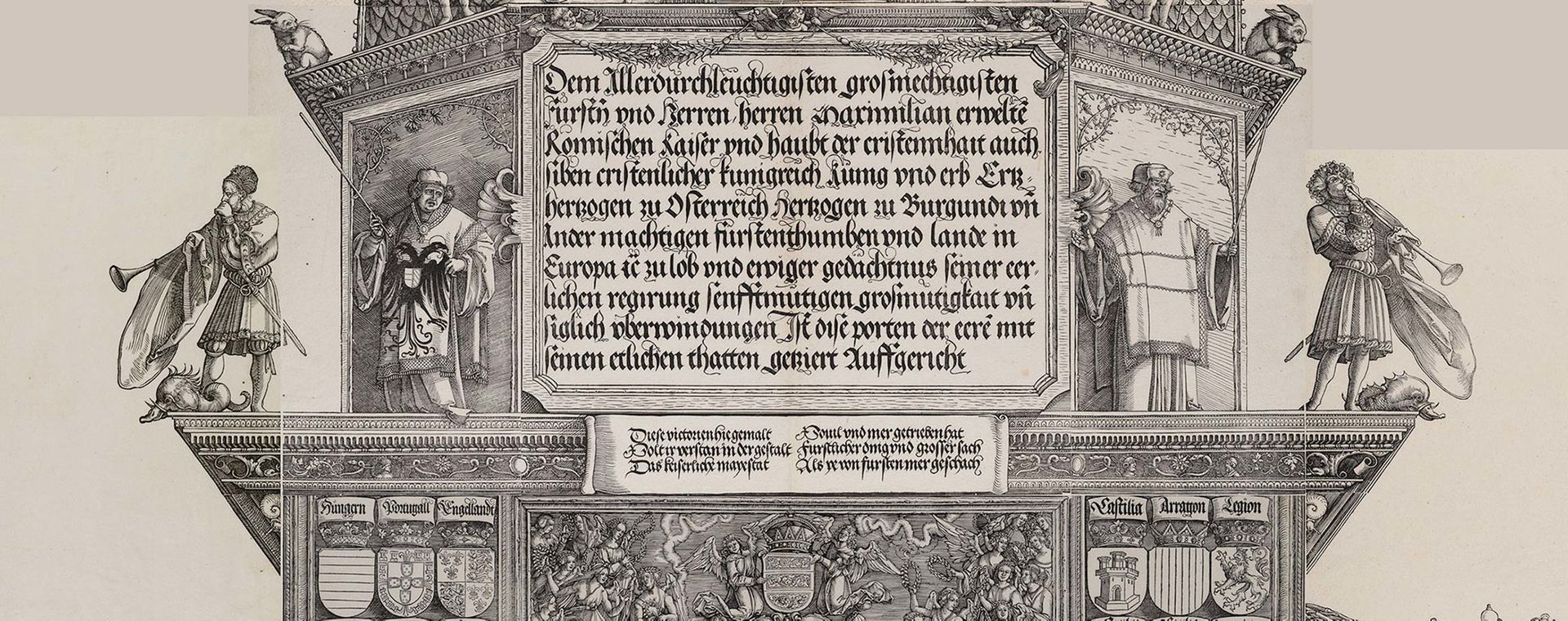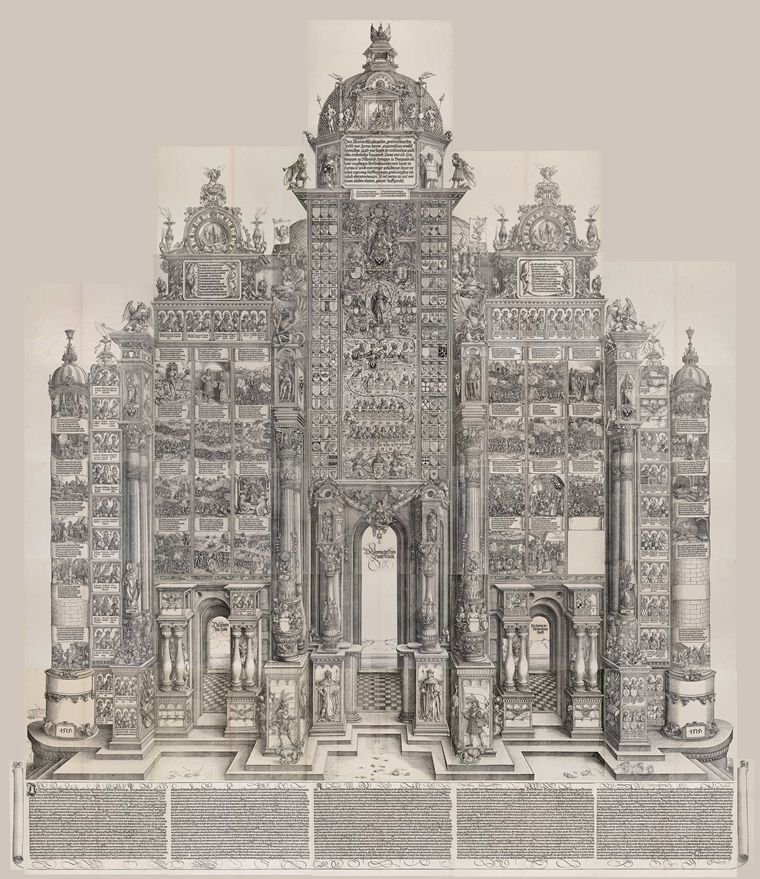
Dürer's Monumental Arch of Honor
He who during his life provides no remembrance for himself has no remembrance after his death and the same person is forgotten with the tolling of the bell.
—Maximilian I (1459–1519)
Emperor Maximilian I strongly believed in the need for monuments and memorials to convey his lasting fame, even monuments made of the ephemeral substance of paper.
To achieve this goal, the Hapsburg emperor created the Arch of Honor. The only woodcut project completed during his lifetime, and the summation of his imperial ambitions, it remains one of the largest prints ever produced.
Monumental composite image of the Arch, digitally pieced together from the 36 individual sheets in The Met collection
Albrecht Dürer (German, 1471–1528); Other artists: Albrecht Altdorfer (German, ca. 1480–1538), Hans Springinklee (German, ca. 1495–after 1522), and Wolf Traut (German, 1486–1520); Calligrapher: Johann Neudörffer the Elder (German, 1497–1563); Printer: Hieronymus Andreae, called Formschneyder (German, ca. 1485–1556); Designer: Jorg Kölderer (German, active 1497–died 1540). Arch of Honor, ca. 1515–1519. Woodcut, each sheet 18 x 24 1/2 in. (45.7 x 62.2 cm). The Metropolitan Museum of Art, New York, Harris Brisbane Dick Fund, 1928 (28.82.7–.42)
The Design
The overall plan for the Arch of Honor was devised by the Emperor himself, along with his private secretary, in 1512. The images on the monument correspond to a literary program, or a series of narrative moments, that was further developed by the emperor's court historian, Johannes Stabius. The spectacular visual program was designed mainly by none other than the renowned Nuremberg artist Albrecht Dürer and his workshop.
The Thirty-Six Sheets
The Arch consists of thirty-six sheets that show the emperor's ancestry, his territories, his extended kinship, his predecessors as emperor, his deeds and accomplishments, his personal talents and interests, and thus his glory. The sheets were meant to be cut up and pieced together into a massive, Roman-style triumphal arch, measuring approximately twelve by ten feet. Complete sets of the proof and the first edition are extremely rare, and a few sets are hand-colored to look like tapestries.
The Arch in the collection of The Metropolitan Museum of Art is a complete proof printed in 1517/18. Never pieced together, it remains as a set of loose, largely uncut sheets.
Each of The Met's thirty-six sheets has been individually photographed and digitally pieced together to create the monumental high-resolution image above to enable close viewing. A fully assembled Arch, on loan from the National Gallery of Art, Washington, D.C., was on view in the exhibition The Last Knight: The Art, Armor, and Ambition of Maximilian I, along with six sheets from The Met's edition.
See a high-resolution image and read a rare English translation of the inscription that spans the base of the arch.
Behind the Scenes
Learn more about the Arch from curator Freyda Spira and see paper conservator Rachel Mustalish prepare the sheets for display.

